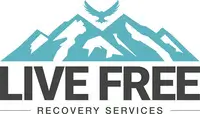Aftercare Addiction Treatment in New Hampshire
Aftercare is an indispensable phase of any addiction treatment plan and a fundamental part of relapse prevention.
The rate of drug use in New Hampshire is among the top 10 states across the US. Additionally, the rate of drug-induced deaths is higher than the national average.
Admitting individuals struggling with substance use to addiction centers to detox isn’t enough to achieve recovery as relapse rates reach up to 60% after initial treatment. The key to maintaining long-term recovery and consequently resolving the state’s pressing drug problem is implementing effective treatment utilizing aftercare services.
In today’s guide, we’re sharing what you need to know about aftercare from its definition and principles to types and timeline. Having a clearer understanding of the different steps of addiction treatment can help you make an informed decision when seeking help for yourself or your loved one.

The Definition of Aftercare in Addiction Treatment
Aftercare is an indispensable phase of any addiction treatment plan and a fundamental part of relapse prevention. It refers to any form of support, care, or treatment that a recovering patient continues to receive after finishing an initial rehab period.
What Are the Goals of Aftercare in Addiction Treatment
An aftercare plan serves multiple purposes, such as:
- Aiding patients in overcoming their substance abuse disorder outside of a controlled environment.
- Helping patients stay drug-free by working on suppressing triggers and urges that may lead to relapse.
- Facilitating the transition of patients back into normal lives after living in a supervised facility.
- Supporting patients in building a new, healthy lifestyle.
- Helping patients surround themselves with a reliable support system.
What Are the Main Aspects Covered by Aftercare?
An aftercare plan is only effective when it covers the four main factors contributing to the efficacy and continuity of addiction recovery:
Health
Addressing the patient’s health is a crucial part of ensuring their sobriety. This includes:
- Monitoring the physical and psychological symptoms of addiction/withdrawal
- Running periodic tests to detect the presence of drugs in their system
- Offering medical solutions (medications, therapy, etc.) to reduce or overcome unpleasant symptoms
Self-Meaning
This part of aftercare is concerned with helping the patient find a sense of purpose and meaning in life, possibly through fulfilling responsibilities in work, school, or familial relationships. This is essential for finding motivation to remain drug-free.
Environment and Social Circle
The patient’s social life and the surrounding community can significantly influence their ability to stay sober. Aftercare helps patients fix and improve their relationships with family and friends, become functioning members of the neighborhood, and establish new connections with peers who can provide extra support.
Residence and Communication Channels
Aftercare plans often address the housing situation of the patient after completing initial rehab. This is typically done by securing a stable residence arrangement (such as sober living homes) for the first few months after recovery.
Aftercare also ensures there are multiple ways for patients to easily contact case managers in case of an emergency.
What Are the Options Available for Aftercare Plans?
Developing an aftercare plan requires careful consideration of the patient’s specific case. Depending on the type of addiction, its severity, the patient’s progress, and their needs, medical professionals select suitable options from a wide range of aftercare services.
Many types of services are available under the aftercare umbrella, employing varying techniques and approaches to address different substance abuse treatment levels, durations, and settings.
Let’s have a look at some of the most common aftercare options:
Supervised Programs
This type of aftercare services refers to treatment programs managed by specialized rehab centers. The idea is to have patients come down to the facility to participate in therapy sessions and then leave afterward.
Types of supervised aftercare programs include:
PHP (Partial Hospitalization Programs)
Patients enrolled in a PHP go to the treatment center at least five days a week and receive therapy for about four to six hours each visit. This routine continues for one to three months before transitioning to a less controlled program.
The primary difference between PHPs and in-patient/residential programs is that patients don’t spend the night at the facility.
The support level in a PHP is closely regulated yet somewhat flexible, so it’s a middle ground between in-patient and outpatient programs. As such, PHPs are recommended for patients whose substance use disorder is mild to moderate in severity.
IOP (Intensive Outpatient Programs)
IOPs are less structured than PHPs and less flexible than standard outpatient programs. They’re designed to nurture independence as patients learn to live without tight supervision during initial treatment.
Similar to a PHP, an IOP patient attends therapy sessions at the treatment facility and leaves back to their everyday life afterward. The difference is that IOPs feature shorter and fewer sessions, usually two to four hours a day, two or three days a week.
IOPs generally last a few weeks up to a couple of months and are indicated for patients whose substance use disorder is moderate in severity.
Outpatient Treatment Programs
As for patients with mild cases of addiction or transitioning from a PHP or IOP, standard outpatient programs provide the highest level of flexibility with some degree of regulation for security. They’re ideal for those who don’t need close supervision and are well on their way to living fully independently.
Patients in an outpatient program visit the facility once or twice a week and receive around an hour or two of therapy. This usually lasts for a few weeks and up to two months.
Therapy and Counseling
Besides supervised programs, several types of therapies and counseling sessions are used in aftercare plans. These are a crucial part of aftercare and can be implemented within facility-conducted programs or received alone.
Therapy and counseling deal with the patient’s mental health, which is the most influential factor contributing to substance abuse disorders. Not to mention, it’s the aspect that persists longest after initial treatment.
Examples of therapy and counseling include:
- Cognitive Behavioral Therapy (CBT): It helps patients pinpoint negative feelings and behaviors that lead to destructive patterns by linking thoughts and emotions to harmful actions.
- Dialectical Behavior Therapy (DBT): A sub-type of CBT, DBT enables patients to identify triggers, allowing them to better control their cravings and urges. It helps them build practical coping mechanisms to confront impulses and triggers.
- Motivational Interviewing (MI) or Motivational Enhancement Therapy (MET): This type of therapy helps patients seek out the necessary motivation for continually fighting cravings and staying committed to the new changes they introduce into their lives.
- Biofeedback Therapy: This type of therapy uses electronic sensors that monitor the patient’s involuntary reactions (such as blood pressure, heart rate, breathing rate, muscle contractions, sweating, and skin temperature) to various external stimuli. This enables medical professionals to understand the response of patients to physical and emotional stressors (such as cravings and withdrawal), which contributes to developing effective coping mechanisms.
- Experiential Therapy: This includes hands-on activities that help patients work through repressed feelings and reach better self-awareness. Common examples include music therapy, recreation therapy, wilderness therapy, adventure therapy, ropes courses, rock climbing, and sculpting.
- Holistic Therapy: This type of therapy is concerned with patients’ overall physical and mental well-being. It utilizes alternative practices such as breathing exercises, guided meditation, pet-assisted therapy, aromatherapy, massage therapy, proper nutrition, and art therapy.
- Faith-Based Drug Rehab: This helps religious patients deal with the spiritual side of their recovery process.
Support Groups
Peer support groups (such as 12-step programs) are essential for establishing a sense of belonging and forming new relationships with individuals sharing similar experiences. Examples of support groups include:
- AA (Alcoholics Anonymous)
- NA (Narcotics Anonymous)
- GA (Gamblers Anonymous)
- DRA (Dual Recovery Anonymous)
- SMART Recovery
- Alumni programs
- Adolescent after-school programs
Halfway Residences
The goal of halfway homes or sober residences is to help recovering patients transition from living in a closely supervised environment at a rehab facility to living an independent life. The assistance offered by sober living during such a vulnerable milestone is crucial in many cases.
Ranging from clinically supervised to fully run by peers, sober living homes provide patients with a healthy living arrangement that supports continued recovery.
What Does the Timeline of Aftercare Look Like?
The duration of aftercare as a whole process is lifelong, but the most monitored portions of aftercare typically last for the first few months after initial rehab (when the risk of relapse is highest), followed by more flexible and less demanding approaches.
That’s because an aftercare plan consists of multiple support levels each that vary in duration depending on the patient’s case.
Conclusion: Preventing Relapse
The top objective of aftercare services is to provide patients with practical tools to maintain their long-term recovery. If you or your loved one is struggling with staying drug-free, don’t hesitate to reach out to us at Live Free. we’ll offer you the necessary guidance to overcome your substance use disorder through a wide range of aftercare addiction treatment methods.
References
- https://obamawhitehouse.archives.gov/sites/default/files/docs/state_profile-new_hampshire.pdf
- https://www.cdc.gov/nchs/pressroom/states/newhampshire/nh.htm
- https://www.justice.gov/archive/ndic/pubs0/662/overview.htm
- https://www.ncbi.nlm.nih.gov/pmc/articles/PMC2670779/
- https://www.ncbi.nlm.nih.gov/pmc/articles/PMC7813220/
- https://www.ncbi.nlm.nih.gov/pmc/articles/PMC4553654/
- https://www.scirp.org/journal/paperinformation?paperid=73388
Did this article answer your questions?
"*" indicates required fields
Take the First Step Towards a Brighter Tomorrow
At Live Free Recovery, we’re committed to walking alongside you on every step of your journey. Our compassionate team is here to provide the guidance and support you need to overcome addiction and reclaim your life. Don’t wait—reach out today to speak with someone who truly understands your struggles and can help you take that important first step toward healing and a fresh start.
Your path to recovery starts here.
